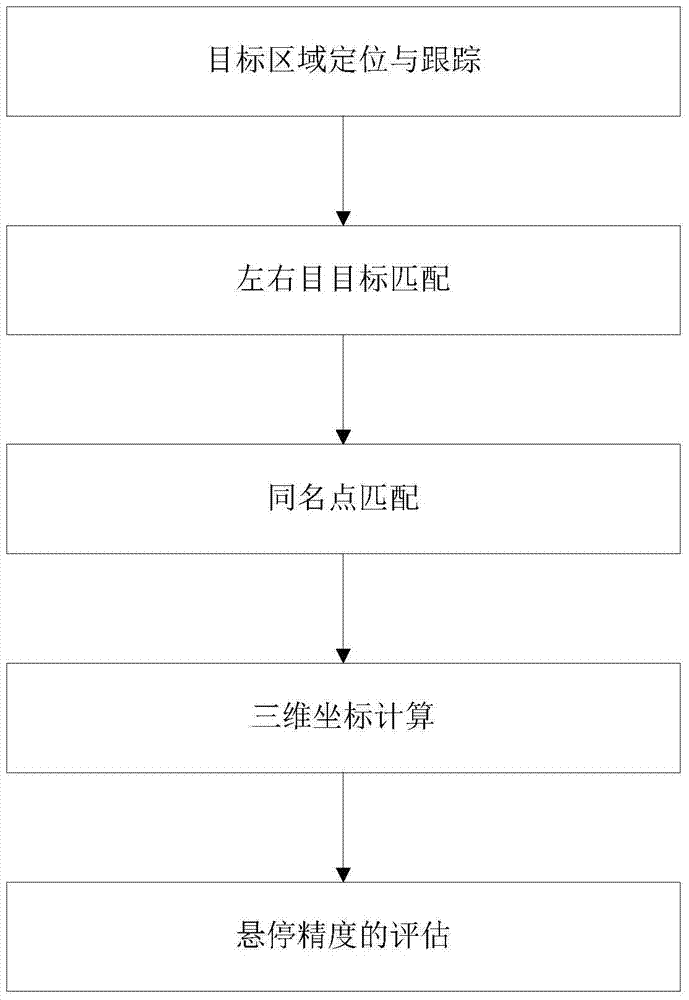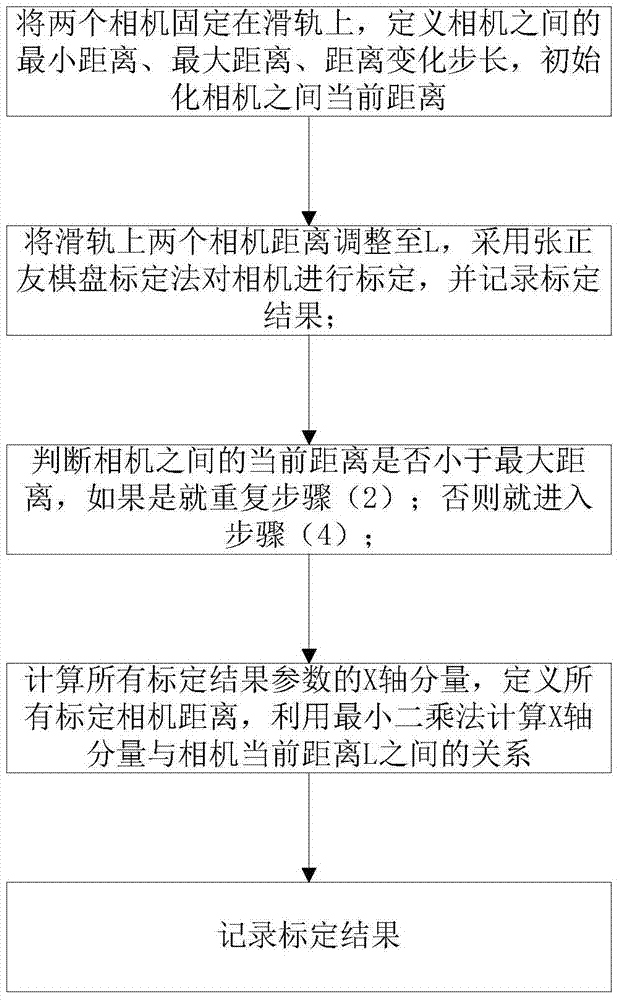Measurement method of drone hovering accuracy based on binocular vision
A technology of hovering precision and binocular vision, which is applied in measuring devices, photogrammetry/video metrology, surveying and navigation, etc. It can solve problems such as the inability to calculate the trajectory of the target and the slow scanning speed of the 3D laser rangefinder.
- Summary
- Abstract
- Description
- Claims
- Application Information
AI Technical Summary
Problems solved by technology
Method used
Image
Examples
Embodiment Construction
[0077] The present invention will be further described below in conjunction with the accompanying drawings and embodiments.
[0078] The hardware consists of: 2 industrial cameras, 1 camera slide rail, 1 set of industrial computer and monitor, and 1 checkerboard calibration version. The whole system structure is as Figure 5 shown.
[0079] 1, 2: Industrial camera. The focal length of the lens is 5mm, the resolution is 1384x1032, and the frame rate is 16 frames per second.
[0080] 3: Camera slide rail. The length is 1.2m, with a scale, and the division value is 1mm.
[0081] 4: Industrial computer and monitor. ADLINK MXC-6000 industrial computer.
[0082] 5: Checkerboard calibration board. The number of squares is 19×17, and the width of each square is 20mm.
[0083] 6: Drones. Unmanned helicopters, multi-rotor drones.
[0084] Such as figure 1 As shown, the whole process is divided into two stages: the calibration stage and the positioning stage. In the calibrati...
PUM
 Login to View More
Login to View More Abstract
Description
Claims
Application Information
 Login to View More
Login to View More - R&D
- Intellectual Property
- Life Sciences
- Materials
- Tech Scout
- Unparalleled Data Quality
- Higher Quality Content
- 60% Fewer Hallucinations
Browse by: Latest US Patents, China's latest patents, Technical Efficacy Thesaurus, Application Domain, Technology Topic, Popular Technical Reports.
© 2025 PatSnap. All rights reserved.Legal|Privacy policy|Modern Slavery Act Transparency Statement|Sitemap|About US| Contact US: help@patsnap.com



